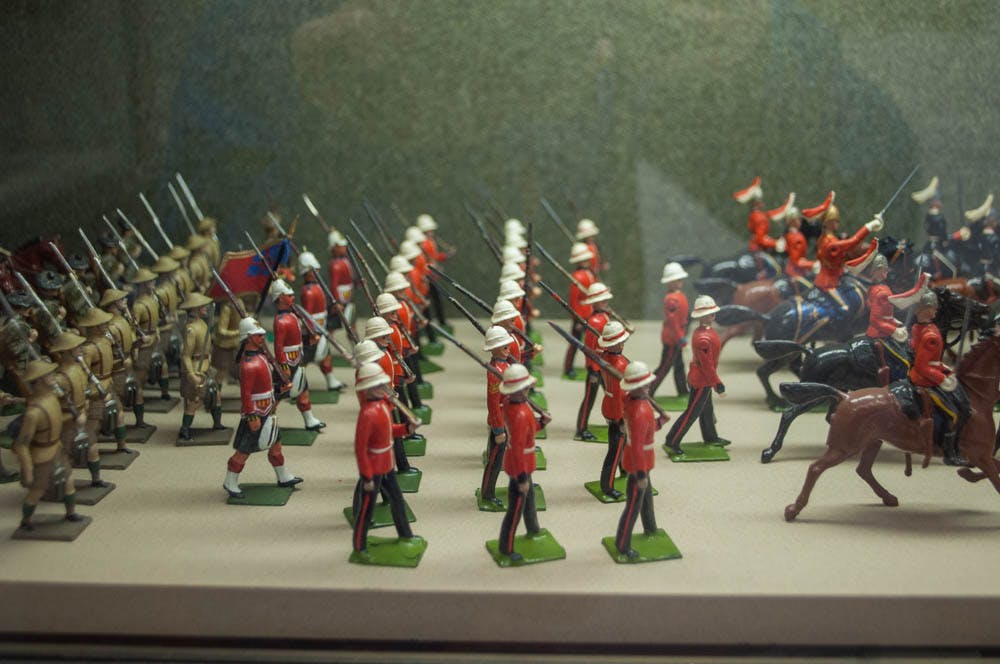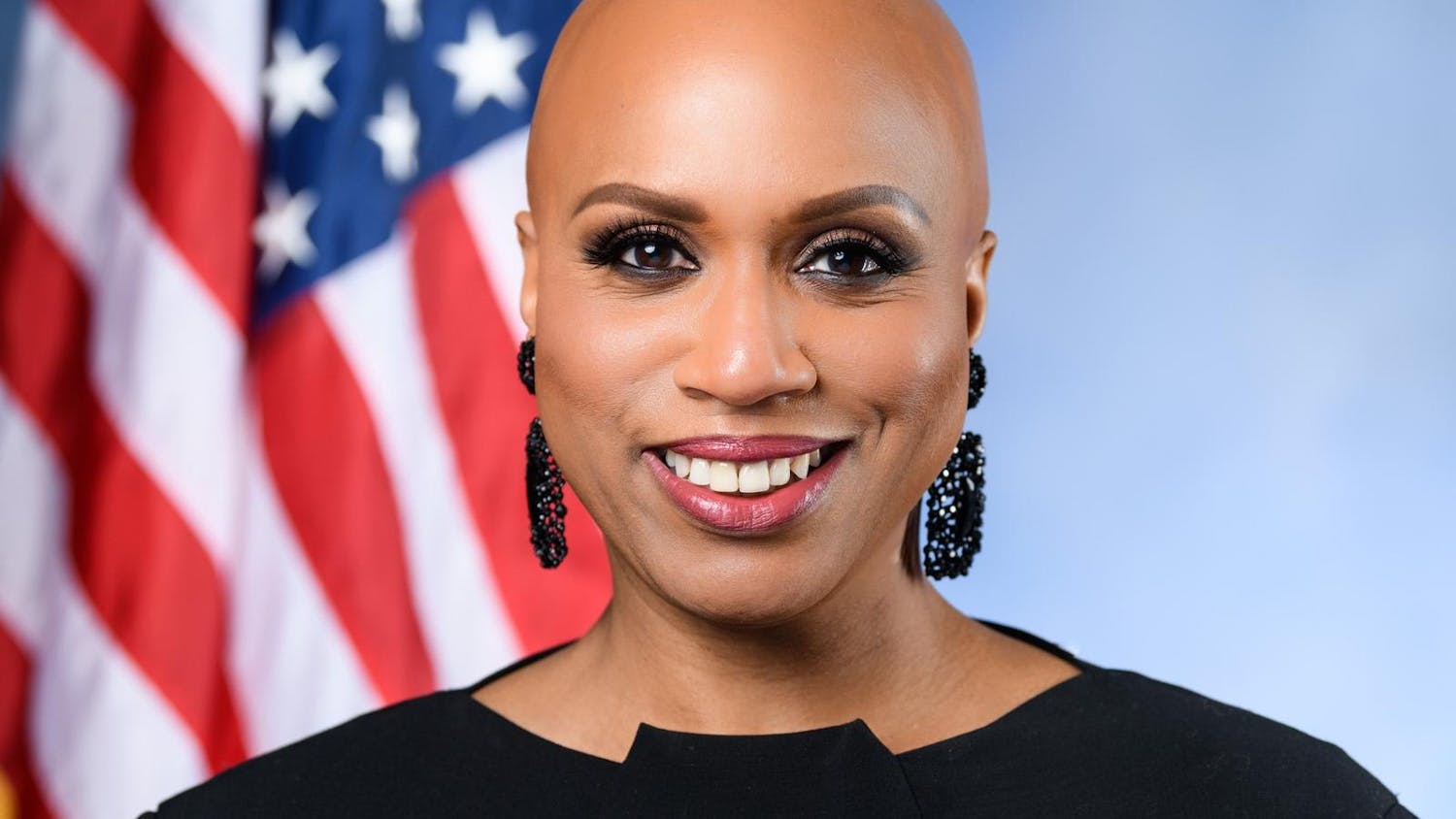The Anne S.K. Brown Military Collection in the John Hay Library loaned two 16th-century books to the Art Institute of Chicago last week. The volumes will be displayed through March 2018 in the inaugural exhibit for the museum’s Deering Family Galleries of Medieval and Renaissance Art, Arms and Armor. The loan is one of many that the University’s special collections regularly makes to outside institutions. As superintendents of these collections, staff members of the University’s libraries must balance the role of artifacts as accessible educational tools with the desire to preserve the objects and their history.
Donated to the University in 1981, the Anne S.K. Brown Military Collection “consists of over 20,000 books, about 15,000 prints, drawings, paintings, watercolors, 5,000 little toy soldiers … and several hundred portfolios, scrapbooks, sketchbooks and albums,” said Peter Harrington, curator of the collection. These objects were amassed by the collection’s namesake, and the entire collection reflects world military history from roughly 1500 to 1945, with its oldest book dating to 1472. Brown built most of the collection “in the decade after World War II, when most people had had enough of wars and armies,” Harrington said. “So she was buying stuff for next to nothing.”
The collection’s hallmark is its “international focus,” Harrington said. “Its strength is in its graphics,” he added. “Mrs. Brown just loved pictures of men in uniform.” The collection’s distinctiveness also stems from the fact that close to 28,000 of its images are available online, making it “the only collection in the library that has such a significant percentage of the material fully digitized,” added Christopher Geissler, director of the Hay and special collections.
Though not all artifacts in the collection are digitized, a large number of objects are “available to people around the world, students at Brown, students anywhere else.” Since the digitization of much of the collection, the number of “requests from all over the world for publications, exhibitions and personal use” has also increased, he added.
While institutions occasionally visit one of the University’s collections to scope out items of interest or ask curators to send them a selection of objects to look at, “in most cases, the requesting institutions know exactly what they want,” Harrington said. In the case of the loan to the Art Institute of Chicago, a curator at the museum who previously taught at the Rhode Island School of Design specifically requested the two books from the military collection, he added.
“There are several stages to approving the loan, and there are a lot of factors that go into it,” said Rachel Lapkin, library materials conservator. Lapkin makes recommendations for access to certain materials based on the suitability of the environment the loaned objects would be displayed in. For example, certain lighting can affect pigments — especially watercolors — and potentially cause fading, she said.
If the Hay approves the artifacts for a loan, Lapkin must figure out how to make its display placement and lighting conform to her “very specific idea of how safely an object can be displayed” she said. How the object will be transported, where it will be stored, and who will install it must also be taken into consideration, she added.
“Long-term care and preservation of the collections” require monitoring how materials are handled in the reading room and conducting physical repairs, as well as ensuring that loans do not jeopardize the safety of an object, Lapkin said. Preservation of the “very rare, very unique” artifacts for “generations down the line” is a duty, Harrington said.
“We’re custodians,” he said. “We’ve succeeded custodians, and other custodians will succeed us to look after this material.”
But for library staff members, preserving materials and allowing viewers to access and learn from them are not mutually exclusive. “First of all … we are concerned with providing access,” Lapkin said. “A lot of these materials are going to be handled — we want them to be handled.” Making volumes accessible in the stacks rather than confining them to exhibition cases is crucial, she added. “Books are really dynamic, and it’s actually frustrating to see materials with so many possibilities of interpretation and information inside” open to only a certain page in a display case, Lapkin said.
Over the last decade, the library has worked to incorporate special collections into teaching, Harrington said, adding that he will soon be teaching a class on camouflage to students from the Naval War College. “We regard ourselves as educators just like professors,” he said. “Our goal is to inform and educate.”
Special collections staff are also continually acquiring “contemporary material,” Geissler said. “Particularly with born-digital records, we actually have to collect it as it’s being created,” he added. These born-digital records — including a recent acquisition of 85,000 emails — join the digitized materials that have revolutionized the way collections are accessed, Geissler said. With the majority of viewers taking advantage of electronic access, digitization has “transformed the way our work interacts outside of this building,” he added.
“It certainly wasn’t something I dreamed I would ever do,” Lapkin said of her career as a conservator. “I didn’t even know this type of work existed.” But the variability of her position makes it challenging and fulfilling. “It’s a different job every day,” Lapkin said. “As repetitive as some of the physical work can be, it really is about viewing my work from different angles, trying to understand different people’s points of view and dealing with a static object that is going to transform no matter who is interacting with it.”
While Geissler also did not consider becoming a librarian until graduate school, he said that taking part in “the intellectual labor of academic institutions” feels “incredibly fitting.” Harrington, who wrote a paper on the military collection in graduate school and was eventually offered the position of curator by the collection’s donor, said he has never viewed his work as a job. “I’ve been in the collection for many years, but … as we go through and barcode and catalogue stuff that hasn’t been cataloged in … 50 years, I’m finding stuff that I’ve never seen before,” he said.





